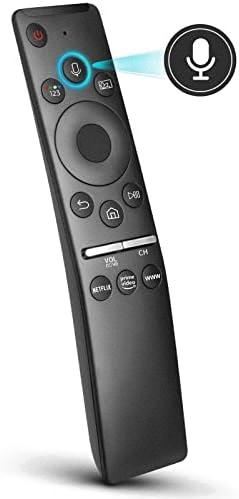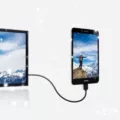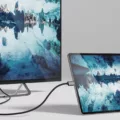When it comes to choosing between the Samsung Q70 and Q80 QLED TVs, there are a few key differences to consider. Both models offer impressive picture quality and a range of features, but they have distinct advantages in different areas.
Starting with the display technology, the Q80 has an ADS (Advanced Display System) panel, which provides wider viewing angles compared to the Q70’s VA (Vertical Alignment) panel. This means that the Q80 offers better visibility from different seating positions, making it a great choice for larger rooms or wide seating arrangements.
In terms of HDR performance, the Q80 also has the upper hand. It can get significantly brighter in HDR, allowing highlights to stand out more vividly and accurately. This is particularly important for content with high dynamic range, as it ensures that bright elements in the image are properly showcased.
On the other hand, the Q70 excels in contrast and black uniformity due to its VA panel. It offers a better contrast ratio, which means that it can display deeper blacks and brighter whites, resulting in a more dynamic and immersive viewing experience. Additionally, the Q70’s black uniformity is improved, reducing the presence of any unwanted backlight bleeding or clouding.
Moving on to other features, both the Q70 and Q80 offer excellent gaming capabilities. They both support HDMI 2.1 bandwidth, which allows for higher resolution and faster refresh rates. They also support Variable Refresh Rate (VRR), reducing screen tearing and providing smoother gameplay. These features make them ideal choices for gamers who want an immersive and responsive gaming experience.
In terms of positioning within Samsung’s lineup, the Q80 is higher in the range than the Q70, which generally translates to better overall performance and features. However, it’s important to note that individual preferences and specific needs may vary, so it’s essential to consider your own requirements before making a decision.
To summarize, the Samsung Q80 offers wider viewing angles and brighter HDR performance, while the Q70 excels in contrast and black uniformity. Both models provide excellent gaming features, making them suitable choices for gamers. Ultimately, the choice between the Q70 and Q80 will depend on your specific needs and preferences.
Is There A Big Difference Between Q70 And Q80?
There is a notable difference between the Q70 and Q80 models. The main distinction lies in the type of panel used in each TV.
The Q80A features an ADS (Advanced Display System) panel, which offers significantly wider viewing angles compared to the Q70A. This means that no matter where you are seated in the room, you’ll experience consistent picture quality and color accuracy on the Q80A.
Additionally, the Q80A has a higher peak brightness in HDR (High Dynamic Range) content. This means that the highlights in HDR videos will be noticeably brighter and more vibrant, providing a more immersive viewing experience.
On the other hand, the Q70A boasts a VA (Vertical Alignment) panel, which results in a superior contrast ratio and improved black uniformity. This means that the Q70A can produce deeper blacks and better overall picture quality in dark scenes.
To summarize the differences:
Q80A:
– ADS panel with wider viewing angles
– Higher peak brightness in HDR
– Immersive HDR viewing experience
Q70A:
– VA panel with better contrast ratio
– Improved black uniformity
– Deeper blacks and superior picture quality in dark scenes
It’s important to consider your specific preferences and viewing conditions when choosing between the Q70 and Q80. If wide viewing angles and brighter HDR highlights are important to you, the Q80A might be the better choice. However, if you prioritize deeper blacks and better contrast, the Q70A may be more suitable.

Is The Samsung Q80 Worth It?
The Samsung Q80B is definitely worth considering if you’re in the market for a new TV. Here are some reasons why:
1. Excellent peak brightness: The Q80B performs exceptionally well in bright rooms due to its high peak brightness. This means that even in well-lit environments, you’ll still be able to enjoy a vibrant and detailed picture.
2. Wide viewing angle: If you have a wide seating arrangement or plan to place the TV in a room where people will be viewing from different angles, the Q80B is a great choice. It offers a wide viewing angle, ensuring that everyone in the room can enjoy a consistent and accurate picture quality.
3. PC monitor compatibility: The Q80B can also be used as a PC monitor, thanks to its impressive performance and features. Whether you’re working or gaming, you’ll benefit from the TV’s high resolution and low input lag, providing a smooth and immersive experience.
4. Gaming features: For gamers, the Q80B has a lot to offer. It supports HDMI 2.1 bandwidth, which means you can take advantage of higher frame rates and resolutions. Additionally, it has Variable Refresh Rate (VRR) support, reducing screen tearing and providing a smoother gaming experience.
5. Overall picture quality: The Q80B boasts impressive picture quality with deep blacks and vibrant colors. It utilizes Samsung’s Quantum Dot technology, which enhances the color accuracy and provides a wider color gamut, resulting in a more realistic and immersive viewing experience.
6. Smart features: As with most modern TVs, the Q80B comes with smart features, allowing you to stream your favorite content from popular streaming services like Netflix, Hulu, and Amazon Prime Video. The TV also has a user-friendly interface and supports voice control for easy navigation.
The Samsung Q80B is a versatile and high-performing TV that excels in various areas. Whether you need it for bright rooms, wide viewing angles, gaming, or as a PC monitor, it offers a great combination of features and picture quality.
What Is The Difference Between Samsung Q70 And Q90?
The Samsung Q70 and Q90 are both QLED TVs offered by Samsung, but they differ in terms of performance and features. Here are the key differences between the two models:
1. Local Dimming: The Q90 has a local dimming feature, whereas the Q70 does not. Local dimming allows the TV to control the backlighting in specific zones, resulting in deeper blacks and improved contrast.
2. Black Levels: Due to the local dimming feature, the Q90 can achieve deeper blacks compared to the Q70. This enhances the overall picture quality and makes dark scenes appear more detailed and immersive.
3. Peak Brightness: The Q90 has a higher peak brightness level, which means it can produce brighter highlights and better HDR (High Dynamic Range) performance. This results in a more vibrant and dynamic picture with a wider range of colors and details.
4. Viewing Angle: The Q90 has better viewing angles compared to the Q70. This means that the picture quality remains consistent even when viewed from off-center positions, ensuring a better viewing experience for multiple viewers in a room.
5. Anti-Reflection: The Q90 has an improved anti-reflection technology that helps reduce glare and reflections on the screen. This makes it easier to watch content in brightly lit rooms without being distracted by unwanted reflections.
6. One Connect Box: The Q90 comes with a separate One Connect Box, which houses all the inputs and outputs of the TV. This allows for a cleaner installation as all the cables can be connected to the box, which is then connected to the TV via a single cable. The Q70 does not have this feature.
7. Design: The Q90 has a premium design with a sleeker and slimmer profile compared to the Q70. It also features a more premium finish and a near bezel-less design, giving it a more modern and elegant look.
The Samsung Q90 offers superior performance and features compared to the Q70. With local dimming, improved black levels, higher peak brightness, better viewing angles, anti-reflection technology, a separate One Connect Box, and a premium design, the Q90 provides a more immersive and visually stunning viewing experience.
Which Is Better Samsung Q60 Or Q70?
The Samsung Q70/Q70R QLED is superior to the Samsung Q60/Q60R QLED in several aspects. Here are the main reasons why the Q70R outperforms the Q60R:
1. Local Dimming: The Q70R features local dimming, which enhances contrast by dimming or turning off the backlight in specific areas of the screen. This technology allows for deeper blacks and improved overall picture quality. In contrast, the Q60R lacks local dimming, resulting in less precise black levels and overall contrast performance.
2. Black Uniformity: The Q70R offers better black uniformity than the Q60R. This means that the screen on the Q70R displays a more consistent black level across the entire panel, resulting in a better dark room performance. The Q60R may exhibit more noticeable clouding or backlight bleeding, which can detract from the viewing experience in darker environments.
3. Picture Quality: With its local dimming and improved black uniformity, the Q70R generally delivers better overall picture quality compared to the Q60R. The enhanced contrast and deeper blacks contribute to more vibrant colors and better image depth, making the viewing experience more immersive.
4. HDR Performance: High Dynamic Range (HDR) content is becoming increasingly popular, and the Q70R offers a better HDR performance than the Q60R. The Q70R supports a wider color gamut and higher peak brightness, allowing it to display HDR content with greater detail, vibrant colors, and more accurate representation of highlights and shadows.
5. Gaming Features: If you are a gamer, the Q70R is a better choice. It has a lower input lag, making it more responsive for gaming. Additionally, the Q70R supports Variable Refresh Rate (VRR) technology, including AMD FreeSync, which reduces screen tearing and stuttering during gameplay.
The Samsung Q70R QLED surpasses the Q60R in terms of local dimming, black uniformity, picture quality, HDR performance, and gaming features. If you prioritize a better dark room performance, enhanced contrast, and a more immersive viewing experience, the Q70R is the superior choice.
Conclusion
When comparing the Samsung Q70 and Q80 QLED TVs, it is clear that both models have their own strengths and weaknesses. The Q80 offers an ADS panel with wider viewing angles and better HDR performance, thanks to its higher peak brightness. This makes it a great option for those who prioritize a wide seating arrangement or want to use the TV as a PC monitor. On the other hand, the Q70 features a VA panel with a superior contrast ratio and improved black uniformity, resulting in better performance in dark room settings.
If you primarily watch content in bright rooms, the Q80’s excellent peak brightness will make sure that highlights stand out as intended. Additionally, its wider viewing angles are beneficial for larger seating areas, allowing everyone to enjoy the picture quality from various angles. The Q80 also boasts gaming features such as HDMI 2.1 bandwidth and VRR support, making it a suitable choice for gamers.
However, if you prioritize deep blacks and overall dark room performance, the Q70’s VA panel and local dimming feature make it the better option. With its superior contrast ratio and black uniformity, the Q70 delivers a more immersive viewing experience in low-light environments.
Ultimately, the choice between the Samsung Q70 and Q80 depends on your specific needs and preferences. If you value wider viewing angles, better HDR performance, and gaming features, the Q80 is the superior choice. However, if you prioritize deep blacks and overall dark room performance, the Q70 is the way to go.








